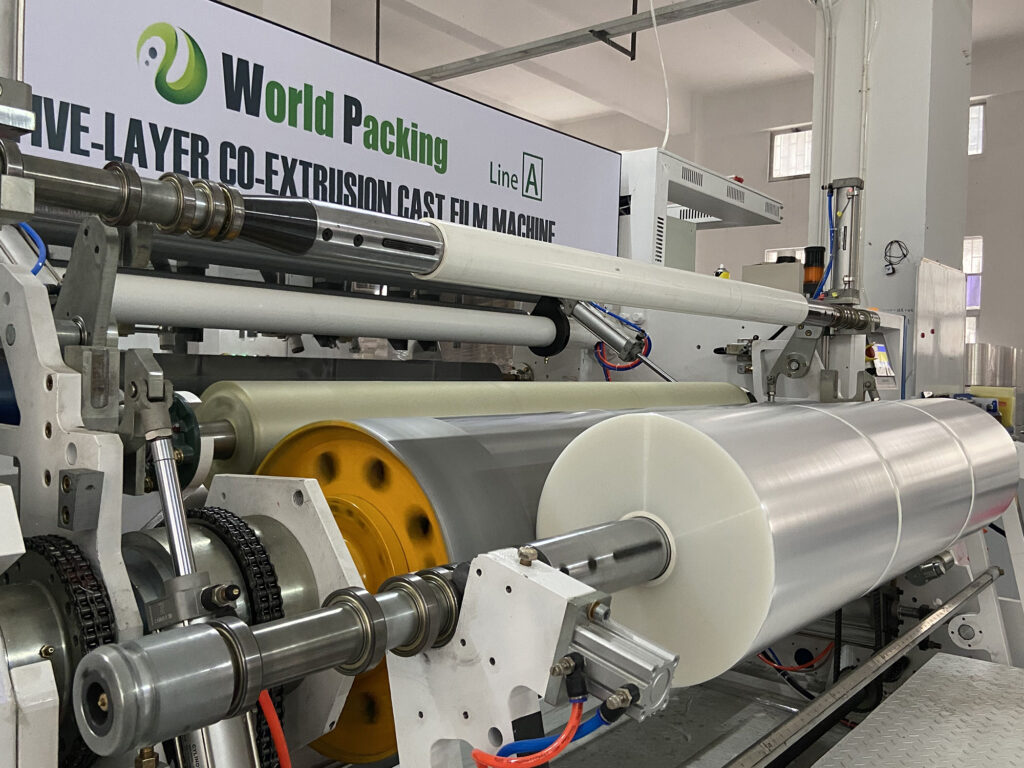There are two methods of producing stretch wrap:

- Blown Stretch Film: Stretch film produced by extruding molten polymer through a circular die and inflating it into a bubble, yielding higher puncture resistance and toughness. This is a slower process but provides for higher cling quality. Blown film is not a consistent extrusion process, leading to inconsistencies across the film web. The cost of production is also higher due to the quantity that can be produced per hour.
- Cast Stretch Film: It produced via the cast extrusion process, offers exceptional clarity and quiet unwind characteristics. In this method, the film is extruded through a slot die and swiftly cooled over rollers, ensuring quick cooling. Although it may lack the cling quality of blown film, cast films are more consistent and exhibit better overall performance. With lower manufacturing costs, cast stretch film is widely used and can be produced at higher rates per hour. Apart from cling quality, other crucial properties such as break strength, tear resistance, static discharge, and clarity are also noteworthy.

